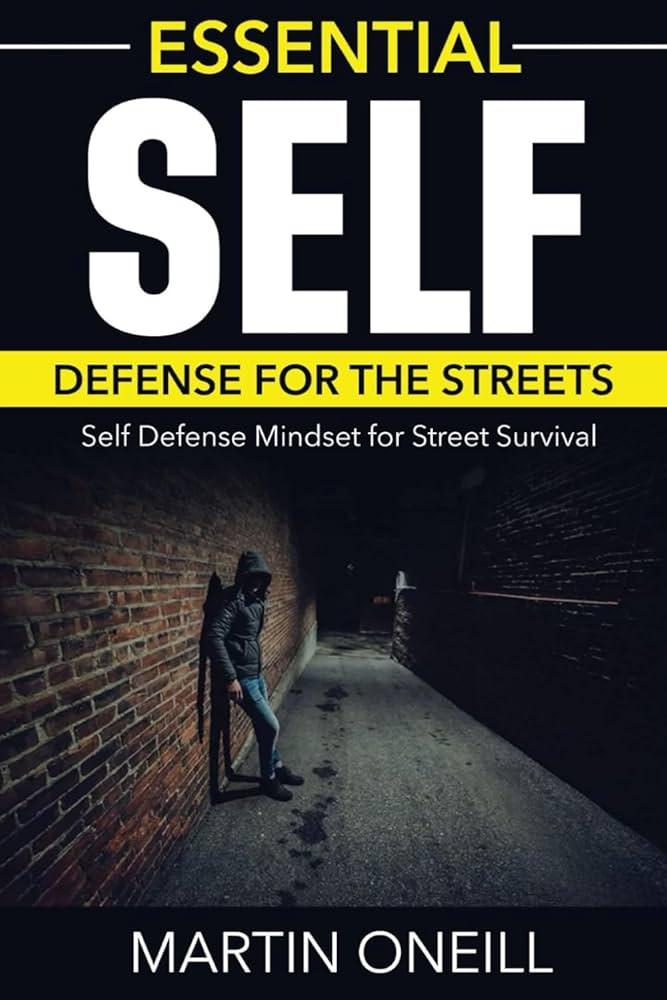Table of Contents
- Understanding the Foundations of a Self-Defense Mindset
- Cultivating Situational Awareness to Anticipate and Avoid Threats
- Building Confidence Through Mental Conditioning and Visualization
- Practical Strategies for Enhancing Personal Safety in Everyday Life
- Insights and Conclusions
Understanding the Foundations of a Self-Defense Mindset
Building a strong foundation for self-defense begins with cultivating the right psychological framework. At its core, this mindset involves more than just physical readiness-it requires heightened awareness, confidence, and mental resilience. Recognizing potential threats before they materialize is essential; this means training yourself to observe your surroundings critically, trust your instincts, and maintain a calm, assertive demeanor even in stressful situations. By embracing a proactive attitude, you’re less likely to be caught off-guard and better equipped to make split-second decisions that could protect your safety.
Developing this mindset also hinges on understanding your personal boundaries and valuing your right to safety. It’s about knowing when to de-escalate a confrontation and when to take action. Key components include:
- Situational Awareness: Always scanning your environment for unusual or suspicious behavior.
- Risk Assessment: Judging the seriousness of a potential threat accurately to respond appropriately.
- Mental Preparedness: Training your mind to remain calm and focused under pressure.
Integrating these principles into your everyday life transforms self-defense from a reactionary skill into a natural state of preparedness, helping you to navigate daily interactions with confidence and control.
Cultivating Situational Awareness to Anticipate and Avoid Threats
Developing acute awareness of your surroundings is a cornerstone of personal safety. It’s not about living in constant fear but about training your mind to pick up on subtle cues and potential hazards before they escalate. This includes observing body language, noting unusual behavior, and recognizing environmental changes. By doing so, you create mental snapshots of normalcy, enabling you to quickly identify when something feels off. Over time, this heightened vigilance becomes second nature, allowing you to make proactive decisions that reduce risk and keep you one step ahead.
- Stay present: Avoid distractions like excessive phone use and focus on your environment.
- Trust your instincts: If a situation or person doesn’t feel right, act on that feeling immediately.
- Use all senses: Sound, smell, and even the atmosphere can provide critical information.
- Plan escape routes: Always be aware of exit points in unfamiliar or crowded areas.
Integrating this mindset into your daily life empowers you to anticipate potential threats rather than react impulsively. Recognizing early warning signs, such as a person following you or skimming a room for vulnerabilities, gives you valuable seconds to decide the safest course of action. Ultimately, cultivating situational awareness enhances your personal confidence and transforms you into an active participant in your own safety-not a passive bystander.
Building Confidence Through Mental Conditioning and Visualization
Mental conditioning is the backbone of a trustworthy self-defense mindset. By training your mind to stay calm and focused under pressure, you transform fear into strategic awareness. One effective technique is consistent
visual rehearsal, where you imagine real-life scenarios and mentally navigate through potential threats. This practice not only prepares your mind for quick decision-making but also helps reinforce positive behavioral patterns before you’re ever in harm’s way.
Incorporating visualization into your routine can significantly enhance your confidence and readiness. Here are some steps to deepen your mental conditioning:
- Visualize diverse environments and threats to build adaptability
- Focus on calm, controlled breathing throughout the imagined scenarios
- Reinforce the feeling of successfully handling each situation
- Repeat regularly to create neural pathways associated with confidence and control
Practical Strategies for Enhancing Personal Safety in Everyday Life
Embarking on a personal safety journey begins with cultivating a proactive mindset that emphasizes vigilance and confidence. Awareness is your most powerful tool-train yourself to notice your surroundings with intention, identifying potential risks before they escalate. This doesn’t mean living in fear, but rather developing a habit of scanning environments, trusting your instincts, and recognizing red flags. Incorporating simple practices such as keeping your head up, maintaining open body language, and avoiding distractions like excessive phone usage can significantly reduce vulnerability.
Beyond awareness, practical tactics empower you to take control. Consider these foundational strategies to build your safety framework:
- Set clear personal boundaries and communicate them assertively to deter unwelcome interactions.
- Learn basic self-defense moves to boost your confidence and preparedness.
- Establish daily safety routines, such as informing trusted contacts of your whereabouts.
- Utilize technology wisely, from safety apps to emergency alert systems.
Embracing these strategies will not only heighten your ability to respond effectively but will also foster a sustained sense of empowerment wherever life takes you.
Insights and Conclusions
Developing a self-defense mindset is more than just learning physical techniques; it’s about cultivating confidence, situational awareness, and a proactive attitude toward personal safety. By embracing this mindset, you empower yourself to respond effectively to potential threats and navigate your environment with greater assurance. Remember, self-defense starts in the mind-investing in your mental preparedness is just as crucial as any physical skill. Stay vigilant, stay confident, and most importantly, stay safe.Check Our Other Blogs
- StunGun – Your Trusted Source for Stun Guns, Laws, and Self-Defense Tips
- PepperSprayLaws – Your Trusted Resource for Pepper Spray Information
- StunGunLaws – Your Trusted Guide to Stun Gun Legality and Safety



